Do you have a question about the MSI K9AGM4 and is the answer not in the manual?
Changes not approved by party responsible for compliance could void user's authority to operate equipment.
Shielded interface cables and A.C. power cord must be used to comply with emission limits.
Diagram showing the placement of key components and connectors on the motherboard.
Details supported AMD processors for the Socket AM2 package and CPU fan header.
Specifies the supported Front Side Bus speed, which is 1000 MHz.
Identifies the North Bridge (RS690V) and South Bridge (SB600) chipsets used.
Outlines compatibility with DDR2 memory modules, including speed and capacity limits.
Describes the supported Fast Ethernet controllers for network connectivity.
Details the integrated audio chip and its features, like 5.1-channel output.
Lists the IDE port details and supported data transfer modes.
Specifies the number of SATAII ports and their data transfer capabilities.
Mentions the floppy port and supported disk drive capacities.
Lists external and on-board connectors for peripherals and internal devices.
Details the available expansion slots, including PCI Express and PCI slots.
Specifies the motherboard's physical dimensions and type, Micro-ATX.
Indicates the number of mounting holes for securing the motherboard.
Step-by-step guide for installing the CPU into the Socket AM2, including lever operation.
Instructions for attaching the CPU cooler and fan, emphasizing proper heat dissipation.
Guide on how to correctly insert memory modules into the DIMM slots, noting orientation.
Details various power and data connectors like ATX, IDE, SATA, and Fan headers.
Overview of the BIOS setup utility's main screen and navigation keys.
Menu for basic system configurations like time, date, and hard disk settings.
Menu for configuring special enhanced features of the BIOS.
Menu to specify settings for integrated peripheral devices.
Menu to configure power management settings for the system.
Configuration options for Plug and Play and PCI devices.
Displays system status including CPU, fan speeds, and warnings.
Menu to adjust CPU and memory frequencies and voltages.
Resets BIOS to factory default settings for stable performance.
Allows setting a password to protect BIOS settings.
Saves current BIOS settings and exits the setup utility.
Abandons all changes and exits the BIOS setup utility.
Displays the current operating frequency of the CPU (read-only).
Displays the current operating frequency of the system memory (read-only).
Enables dynamic adjustment of CPU speed and power consumption.
Allows configuration of DRAM timings, including CAS Latency.
Manually adjust the ratio between the Front Side Bus and memory frequencies.
Shows the adjusted DDR memory frequency after applying settings (read-only).
Turns off clocks for empty PCI slots to minimize electromagnetic interference.
Reduces EMI by modulating clock pulses, impacting stability if overclocking.
Changes not approved by party responsible for compliance could void user's authority to operate equipment.
Shielded interface cables and A.C. power cord must be used to comply with emission limits.
Diagram showing the placement of key components and connectors on the motherboard.
Details supported AMD processors for the Socket AM2 package and CPU fan header.
Specifies the supported Front Side Bus speed, which is 1000 MHz.
Identifies the North Bridge (RS690V) and South Bridge (SB600) chipsets used.
Outlines compatibility with DDR2 memory modules, including speed and capacity limits.
Describes the supported Fast Ethernet controllers for network connectivity.
Details the integrated audio chip and its features, like 5.1-channel output.
Lists the IDE port details and supported data transfer modes.
Specifies the number of SATAII ports and their data transfer capabilities.
Mentions the floppy port and supported disk drive capacities.
Lists external and on-board connectors for peripherals and internal devices.
Details the available expansion slots, including PCI Express and PCI slots.
Specifies the motherboard's physical dimensions and type, Micro-ATX.
Indicates the number of mounting holes for securing the motherboard.
Step-by-step guide for installing the CPU into the Socket AM2, including lever operation.
Instructions for attaching the CPU cooler and fan, emphasizing proper heat dissipation.
Guide on how to correctly insert memory modules into the DIMM slots, noting orientation.
Details various power and data connectors like ATX, IDE, SATA, and Fan headers.
Overview of the BIOS setup utility's main screen and navigation keys.
Menu for basic system configurations like time, date, and hard disk settings.
Menu for configuring special enhanced features of the BIOS.
Menu to specify settings for integrated peripheral devices.
Menu to configure power management settings for the system.
Configuration options for Plug and Play and PCI devices.
Displays system status including CPU, fan speeds, and warnings.
Menu to adjust CPU and memory frequencies and voltages.
Resets BIOS to factory default settings for stable performance.
Allows setting a password to protect BIOS settings.
Saves current BIOS settings and exits the setup utility.
Abandons all changes and exits the BIOS setup utility.
Displays the current operating frequency of the CPU (read-only).
Displays the current operating frequency of the system memory (read-only).
Enables dynamic adjustment of CPU speed and power consumption.
Allows configuration of DRAM timings, including CAS Latency.
Manually adjust the ratio between the Front Side Bus and memory frequencies.
Shows the adjusted DDR memory frequency after applying settings (read-only).
Turns off clocks for empty PCI slots to minimize electromagnetic interference.
Reduces EMI by modulating clock pulses, impacting stability if overclocking.
| Form Factor | Micro ATX |
|---|---|
| Socket | Socket AM2 |
| Chipset | AMD 690G |
| Memory Type | DDR2 |
| Max Memory | 8GB |
| Memory Slots | 4 |
| Expansion Slots | 2 x PCI |
| Storage Interface | 4 x SATA 3Gb/s |
| USB Ports | 8 x USB 2.0 |
| Audio | Realtek ALC888 |
| LAN | Realtek RTL8111B |
| Graphics | Integrated ATI Radeon X1250 |
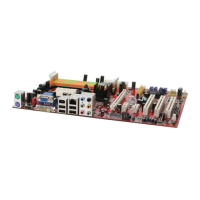
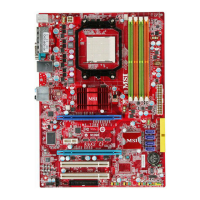

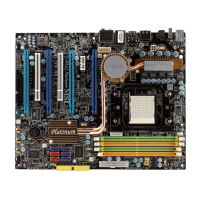
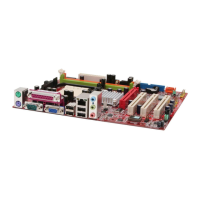
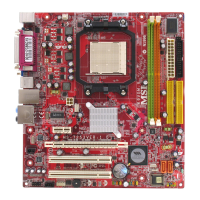
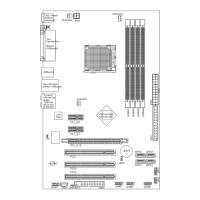


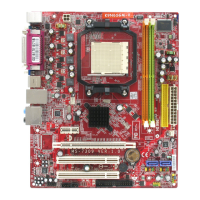
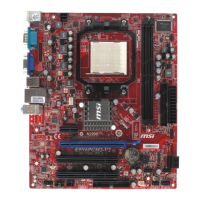
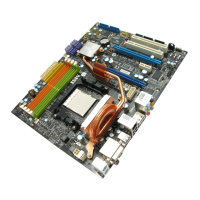
